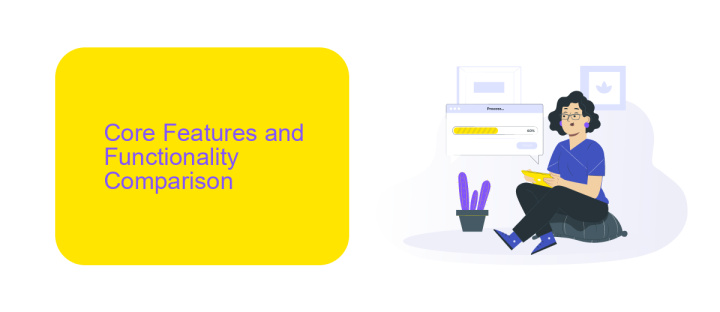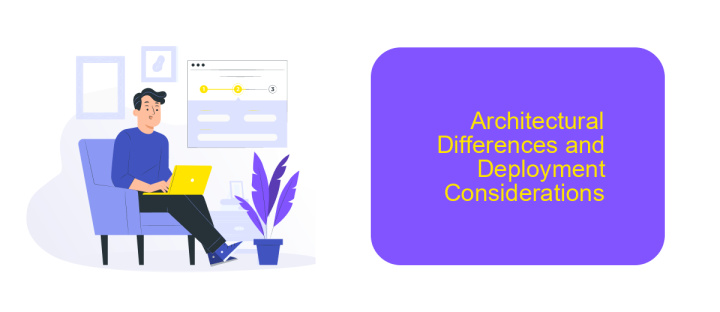Enterprise Service Bus vs iPaaS
In the dynamic landscape of modern business integration, Enterprise Service Bus (ESB) and Integration Platform as a Service (iPaaS) stand out as pivotal solutions. Both aim to streamline and simplify the integration of disparate systems, but they do so in fundamentally different ways. This article explores the key differences, benefits, and use cases of ESB and iPaaS to help organizations make informed decisions.
Introduction: Defining Enterprise Service Bus and iPaaS
Enterprise Service Bus (ESB) and Integration Platform as a Service (iPaaS) are two pivotal technologies in the realm of data integration and system connectivity. ESB acts as a middleware, facilitating communication between various applications within an enterprise, ensuring seamless data flow and service orchestration. On the other hand, iPaaS is a cloud-based solution that enables integration of applications and services across different environments, providing a more flexible and scalable approach.
- Enterprise Service Bus (ESB): Middleware for application integration, focuses on internal enterprise systems, ensures consistent data flow.
- Integration Platform as a Service (iPaaS): Cloud-based integration, supports both cloud and on-premises applications, offers scalability and flexibility.
Choosing between ESB and iPaaS depends on the specific needs of your organization. For instance, ApiX-Drive, an iPaaS solution, simplifies the process of connecting various applications and automating workflows without requiring extensive coding knowledge. Whether you need to integrate cloud-based services or streamline internal processes, understanding the capabilities and use cases of ESB and iPaaS will guide you in making an informed decision.
Core Features and Functionality Comparison

Enterprise Service Bus (ESB) and Integration Platform as a Service (iPaaS) each offer unique core features and functionalities. ESB primarily focuses on facilitating communication between various enterprise applications through a centralized bus architecture. It excels in handling complex, on-premises integrations and supports various protocols and data formats. ESB is ideal for organizations requiring high levels of customization and control over their integration processes, often involving legacy systems and intricate workflows.
In contrast, iPaaS provides a cloud-based solution for integration, emphasizing ease of use and rapid deployment. It offers pre-built connectors, such as those from ApiX-Drive, which allow seamless integration with numerous SaaS applications. iPaaS platforms are designed for scalability and flexibility, enabling businesses to quickly adapt to changing needs without extensive IT intervention. This makes iPaaS a suitable choice for organizations looking for a more agile and cost-effective integration solution, especially those leveraging modern cloud services and applications.
Benefits and Value Proposition of ESB vs iPaaS

Enterprise Service Bus (ESB) and Integration Platform as a Service (iPaaS) both offer unique benefits for businesses looking to streamline their integration processes. ESB is a middleware solution that facilitates communication between different applications in a service-oriented architecture (SOA). It offers robust capabilities for handling complex integrations and ensures reliable message delivery.
- Scalability: iPaaS solutions, such as ApiX-Drive, provide scalable cloud-based integrations that can grow with your business needs.
- Cost Efficiency: iPaaS often has a lower total cost of ownership compared to traditional ESB systems, as it eliminates the need for extensive on-premise infrastructure.
- Ease of Use: Platforms like ApiX-Drive offer user-friendly interfaces and pre-built connectors, simplifying the integration process for non-technical users.
- Flexibility: ESB excels in environments requiring complex, customized integrations and can handle a high volume of transactions with low latency.
While ESB is ideal for large enterprises with intricate integration needs, iPaaS is suitable for businesses seeking cost-effective, scalable, and easy-to-implement integration solutions. Services like ApiX-Drive make it easier to connect various applications and automate workflows without deep technical expertise, providing significant value for small to medium-sized enterprises.
Architectural Differences and Deployment Considerations

Enterprise Service Bus (ESB) and Integration Platform as a Service (iPaaS) offer distinct architectural approaches for integration. ESB typically operates within an on-premises environment, providing a centralized middleware layer to manage communication between applications. In contrast, iPaaS is cloud-based, offering a more decentralized model that simplifies integration across diverse environments.
When considering deployment, ESB requires substantial infrastructure and maintenance efforts, often necessitating specialized IT resources. On the other hand, iPaaS platforms like ApiX-Drive streamline deployment by offering a user-friendly interface and pre-built connectors, reducing the need for extensive technical expertise.
- Scalability: iPaaS solutions are inherently more scalable due to their cloud-native architecture.
- Flexibility: iPaaS offers greater flexibility in integrating cloud-based and on-premises systems.
- Cost: ESB can be more costly due to infrastructure and maintenance, whereas iPaaS operates on a subscription model.
Ultimately, the choice between ESB and iPaaS depends on specific business needs, existing infrastructure, and integration complexity. For businesses seeking quick, scalable, and cost-effective integration solutions, iPaaS platforms such as ApiX-Drive present a compelling option.
Use Cases and Implementation Strategies
Enterprise Service Bus (ESB) is often utilized in scenarios requiring complex, on-premise integrations, where control over data and processes is paramount. Typical use cases include large-scale enterprise systems like ERP, CRM, and custom applications that need to communicate seamlessly. Implementation strategies for ESB involve a detailed analysis of existing systems, followed by the deployment of middleware that standardizes communication protocols and data formats, ensuring smooth interoperability.
On the other hand, Integration Platform as a Service (iPaaS) is ideal for cloud-based integrations, especially for businesses looking to connect a variety of SaaS applications quickly and efficiently. For instance, ApiX-Drive offers a user-friendly interface to set up integrations without extensive coding knowledge. This makes it suitable for small to medium-sized enterprises aiming for rapid deployment and scalability. Implementation strategies for iPaaS typically involve selecting the right platform, configuring pre-built connectors, and leveraging drag-and-drop tools to establish workflows, thereby reducing the time and cost associated with traditional integration methods.


FAQ
What is the main difference between an Enterprise Service Bus (ESB) and Integration Platform as a Service (iPaaS)?
Which solution is more scalable: ESB or iPaaS?
How do ESB and iPaaS handle security?
Can ESB and iPaaS work together?
What are the key benefits of using iPaaS for automation and integration?
Routine tasks take a lot of time from employees? Do they burn out, do not have enough working day for the main duties and important things? Do you understand that the only way out of this situation in modern realities is automation? Try Apix-Drive for free and make sure that the online connector in 5 minutes of setting up integration will remove a significant part of the routine from your life and free up time for you and your employees.

